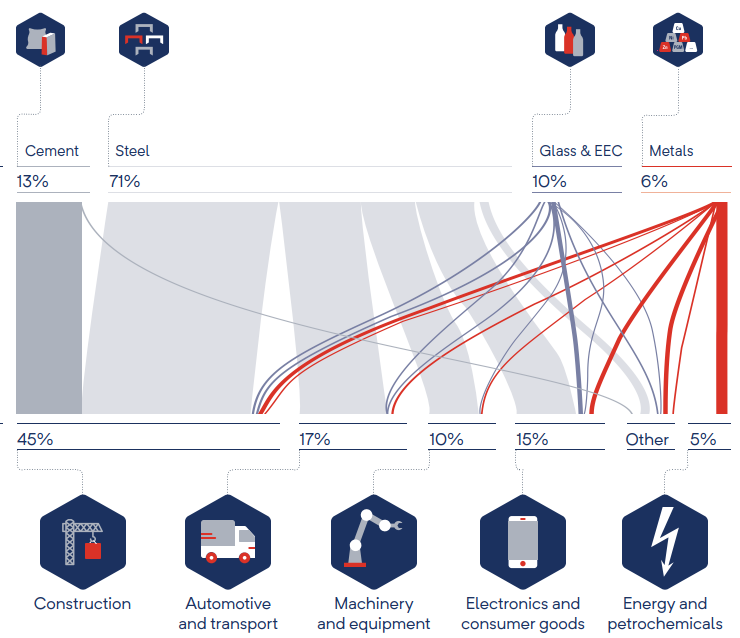Trash Talk: A Three-Pillar Strategy for describing the European waste management system

In a previous Blogpost “Survey on waste Refractories – Tell me about your data”, we talked about the difficulties of acquiring suitable data for our material flow analysis (MFA) with which we want to describe the European waste management system.
Briefly summarised, this type of data is hard to get. This is why we created and promoted a survey to query information of interest. But since response rates of surveys are such a thing, we had to came up with more ideas on how to get data for our MFA. To give a little more context, response rates are often very low, sometimes too low to be statistically significant, but they can always give a glimpse of a possible trend and help to get a first insight. Especially when we look at the final fate distribution, i.e. the distribution of spent refractories among the categories recycle, reuse and landfill as data regarding this topic is rather rare. But we did not want to rely solely on survey data. That’s why we created a multi referentially or three-pillar-approach as we call it, since this serves as a foundation for our MFA. One of the pillars, to be more precisely the third pillar, is of course our survey results. If you have not done so, please participate in the survey. We’d appreciate your support.
The first pillar is based on the limited literature we found regarding this topic and the second pillar is an assumption based on production data. The first pillar relies on peer-reviewed research reports, books and partly on grey literature (conference papers or presentations). As a brief explanation, grey literature lacks a form of quality control like the reviewing process which is mandatory when publishing in renowned journals, therefore it is important to carefully evaluate the reliability and credibility of grey literature sources before using them in research.
For the second pillar we included even more grey literature like annual company or association reports of the steel, cement and refractory industry. We then used the reported production data and the reported specific consumption to calculate the annual refractory demand. Every information that was not reported in annual reports was taken from the first pillar.
For every pillar we created an individual MFA describing the differences and rating the confidentiality of the data and how likely it is that a certain MFA represents reality.
Some may wonder why we go to such lengths to obtain data when there are companies that conduct market research and possess the data that we need. Well, this companies sell this data for a fortune which subsequently may compromise the transparency, future comparability, and repeatability as not every research institute is able or willing to pay such high amounts of money. However, it’s hard to find ways to improve and create effective waste reduction and recycling strategies without accurate and comprehensive data.

Florian Feucht
DI Florian Feucht is research associate at the Chair of Waste Management and Waste Treatment at the Montanuniversität Leoben and part of the Workgroup: “Environmental remediation and mineral waste”. Since 2023, he has been enrolled in the university’s PhD Program. He earned his master’s degree in Applied Geoscience from Montanuniversität Leoben, focusing on the chemical-mineralogical characterization of ladle slag. He completed his bachelor’s degree in Earth Sciences at the University of Vienna, with a thesis on the petrological study of mafic and ultramafic rocks. His research interests include the chemical mineralogical characterization of mineral wastes, mineralogy, slag mineralogy, recycling, and waste management.
Partner

